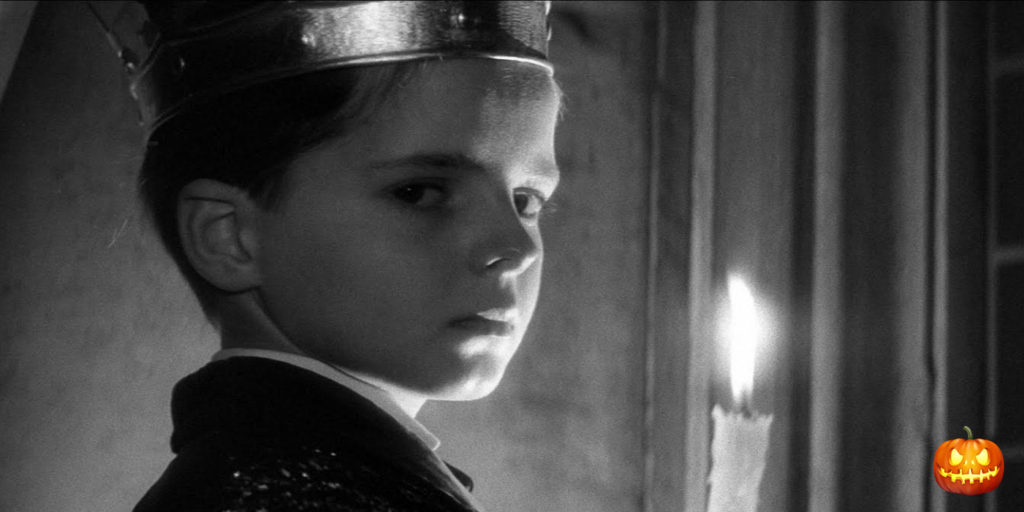The road to Halloween is paved with good films. Wherein we countdown to the spirited season with a hundred doses of horror. 67 days to go.
Adapted from Henry James’ 19th century novella, ‘The Turn of the Screw’, Jack Clayton’s The Innocents (1961) follows a governess, Miss Giddens, as she cares for orphaned brother and sister, Miles and Flora. Mostly alone, with only the housekeeper to her aid, Miss Giddens soon feels uneasy as she suspects the grounds – or even the children – are host of a supernatural presence.
Unfolding with a campfire-esque mode of storytelling, this 1961 film is a staple of psychological horror. The Innocents lets you know only what it wants you to know, drip-feeding information through a mixture of telling imagery and passing description. Placed in the position of the unknowing but curiously concerned governess, the viewing experience is both captivating and distancing as viewers aim to discover the truth either alongside or before Miss Giddens. It is this combination of being both immersed and taken out of the narrative that sets the solid foundation for psychological unease.
And psychological unease is certainly what you get. Subtle in its approach, the film gradually builds the tension not, like many modern horrors, relying on jump-scares or excessive gore to conjure an abject fear in its viewer. Instead, it makes you question reality, i.e. question the only things known to be true. Every mysterious, distant figure and unfamiliar sound helping to infiltrate your psyche until the classic horror ghost story is truly embedded in your head. As a result, the information provided in the film’s first act becomes more and more questionable and, at the same time, so does the governess’ perspective and by extension your own.
“As for the child actors, The Innocents is creepy kids done right.”
This is only further emphasised by the film’s visual style. Shot in black and white, the film manipulates light and shade to its advantage. Shadows obscure sight and capture the foggy-minded nature of our protagonist. Ambiguity is embedded into the narrative through the darkness on screen; for lack of a better term, viewers are left ‘in the dark’. The blending of light and dark results in beautiful and eerie imagery which, to this day, remains the epitome of classic horror cinema.
Within these shadowy frames are expressive performances from the film’s central cast. Deborah Kerr offers a personable and engaging performance throughout which is vital in overall viewer engagement. Her nervousness but also compassion is what makes for such an endearing and believable first-time governess and one can’t help but support her plight even when her mental stability is made ambiguous.
As for the child actors, The Innocents is creepy kids done right. Too many contemporary horrors rely on CGI or makeup to make their child actors scary but The Innocents is a prime example of how less is more. Pamela Franklin and Martin Stephens, Flora and Miles respectively, are kept in simple costume and no makeup and, as a result, provide the film with just two ordinary children who are creepy not for how they look but for how they act.
Both the characters and performances from their respective actors are beyond their years. Young faces but old wisdom and manner is what creates such haunting performances. These children appear too sweet to be evil but the truth is the governess – and the viewer – don’t know what to believe. The uncertainty becomes increasingly uneasy.
Even after the film draws to a close, its story stays with you. Much like the ghosts at the centre of the narrative, The Innocents haunts you for days after watching.

